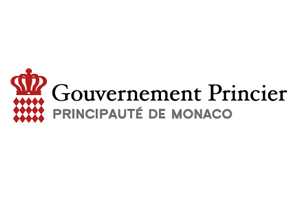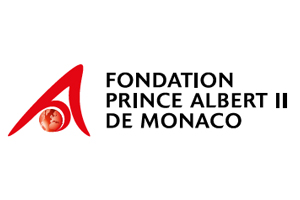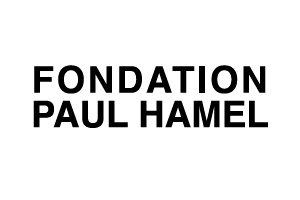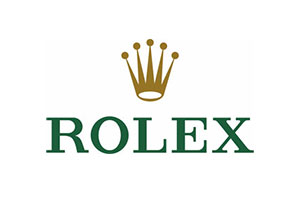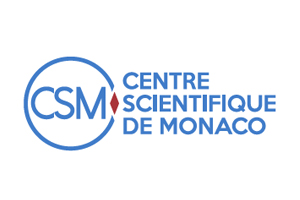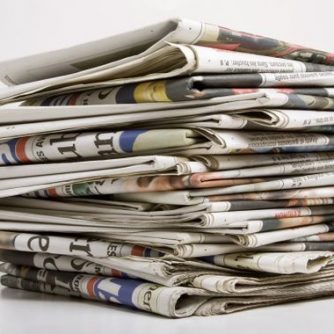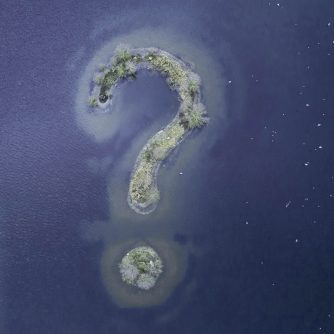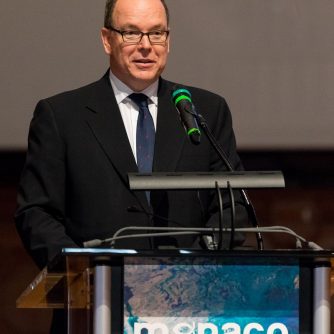- Home
- Actualités
- The Polar Mission course
Please note: The MISSION POLAIRE exhibition is over.
See the permanent collections in the Museum tour.
The “Mission Polaire ” exhibition takes over the Oceanographic Museum from June 4 , 2022 to thursday 5, 2025. This new tour route covers 5 thematic areas spread over two levels. First discover the poles and their wildlife, via the men and women who populate and explore them. Objects
and documents, digital content and immersive devices come together to create a 360° experience. The great voyage can begin!
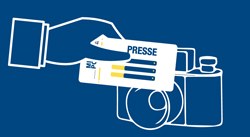
Slip into the shoes of a reporter and set off on a mission to the heart of the polar worlds!
The exhibition Polar Mission
Please be aware: The IMMERSION room (space N°4) has closed. The other areas of the Polar Mission exhibition will remain open until January 5, 2025.
Armed with your press card (your entry ticket), trigger additional content and information throughout your mission;
At the end of the tour, submit your report on the poles via an interactive terminal. Choose the title, a visual for the cover, and include your photo as an illustration. Then get involved with the Oceanographic Institute and the Prince Albert II of Monaco Foundation by supporting our actions to protect the poles, particularly the creation of new Marine Protected Areas in the polar oceans, and share it with as many people as possible.
Adopt the right daily gestures yourself, to help preserve these remote territories.
“The future of the poles is also ours,” reminds us in a message from Mélanie Laurent, the exhibition’s godmother, before adding: “If your polar mission is coming to an end, it’s actually here and now that it really begins!

SPACE N°1
Meet the explorers of the poles - past, present and future.
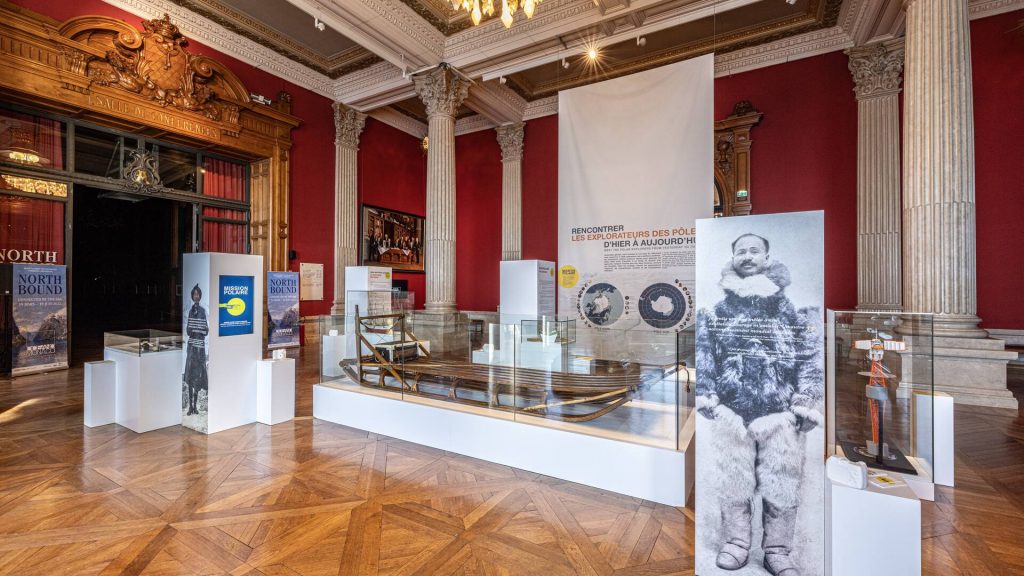
From your very first steps, you’ll come face-to-face with the big names in exploration. Selected for their contribution to the knowledge of the poles, these explorers of yesterday and today, men and women in life size photographs, speak about their work and their discoveries. Thirty of them are portrayed on a huge map, along with a brief summary of their history. Nine others are represented in life-size: contemporaries Jean Malaurie, Jean-Louis Étienne and Frederik Paulsen, pioneers Jean-Baptiste Charcot and Matthew Henson – the first to reach the geographic North Pole – and two women, including Ada Blackjack. Although she was Inuit, Ada, raised by missionaries, knew very little about the land. However, she was the only one to survive the expedition led by four scientists, for which she was hired as a cook.
The spirit of these expeditions has never wavered, from Prince Albert I, who led four expeditions to Spitsbergen, to H.S.H. Prince Albert II, the only head of state to have visited both poles. Not just for the pleasure of the adventure, but to show our determination to act in favor of the protection of these territories, now under threat. It was on returning from one of these trips that He decided to create His foundation.
- SPACE N°2
Entering the world of the Inuit
A leading figure in polar exploration, Jean Malaurie has donated a large part of his collections, archives and personal effects to the Oceanographic Institute, illustrating 70 years of a life dedicated to the peoples of the Arctic.
This collection invites you to immerse yourself in Inuit culture (social life, family life, education…). Numerous everyday objects (clothing, dance masks, art objects, objects linked to beliefs…) are also on display in a scenography reproducing an ice environment, with its traditional igloo.
But it also shows how the Inuit way of life and traditions, closely linked to nature, are today threatened by climate change and pollution, and are constantly being overturned by modernity. Between sled dogs and snowmobiles, between nomadism and sedentarism, between ancestral knowledge of the ice handed down from father to son and now available on apps, how do you find the right balance? It’s imperative to listen to what they have to say.
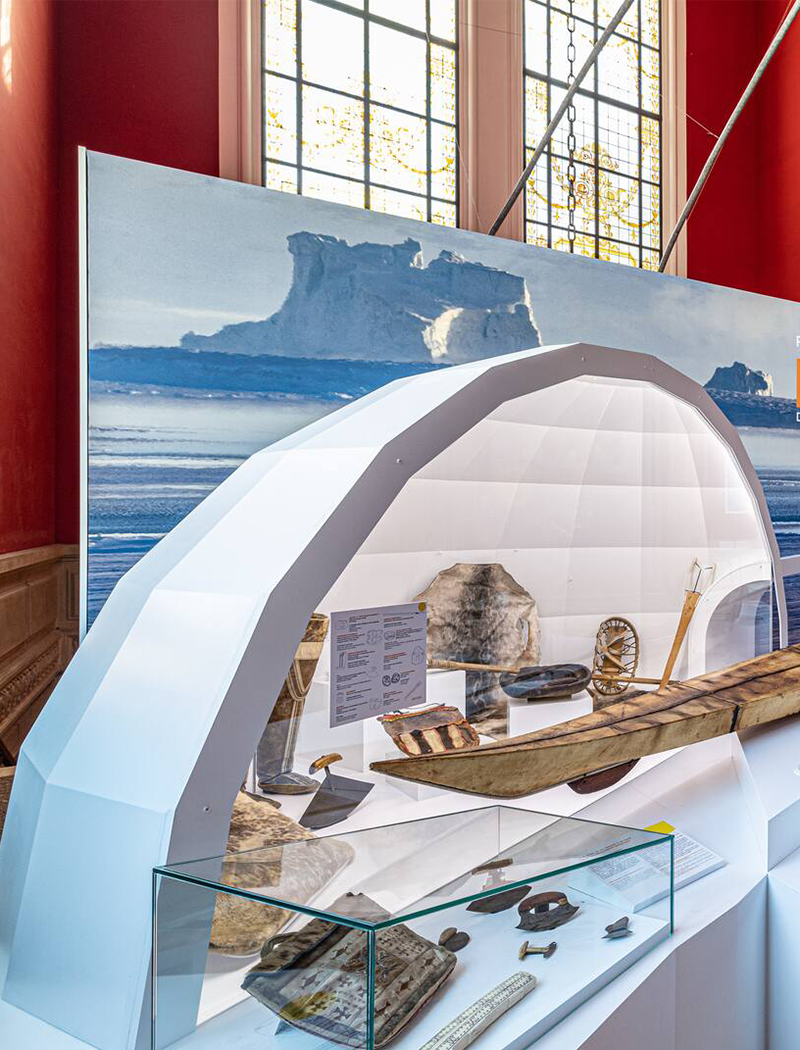
- SPACE N°3
Unlocking the secrets of the North and South Poles
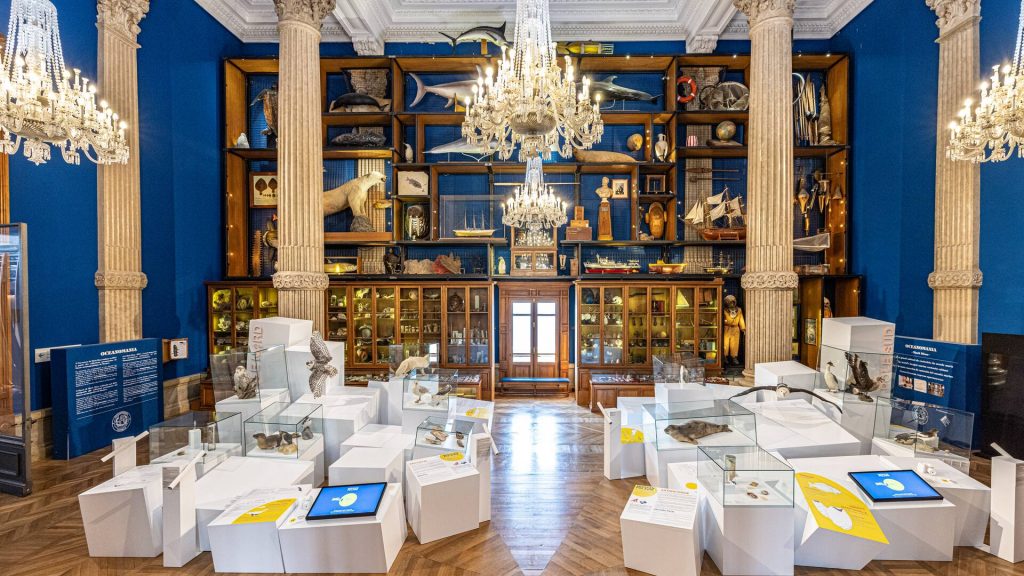
In this third space in the Oceanomania exhibition, learn about the vital role of the poles in balancing the planet. Understanding how they work also means becoming more aware of the impact of the huge upheavals taking place there as a result of climate change.
Learn about the differences between these two extremes. While life is abundant in the Arctic, it is concentrated on the coasts and in the ocean in the Antarctic. Naturalized animals from various scientific collections between the late 19th and 20th centuries will illustrate the difference in fauna between these two opposites: the polar bear in the north, while the penguin is exclusive to the south. It’s important to understand that each species is at the heart of an ecosystem: if a single element is threatened or disappears, the whole ecosystem can often collapse.
Take krill, for example: on the one hand, it feeds on phytoplankton, and on the other, it is itself the prey of ocean predators (penguins, cetaceans, fish…). Its disappearance, or even an imbalance in its reproduction, could have serious consequences for the health of the ocean. A global ocean: to alter it is to harm the whole planet.
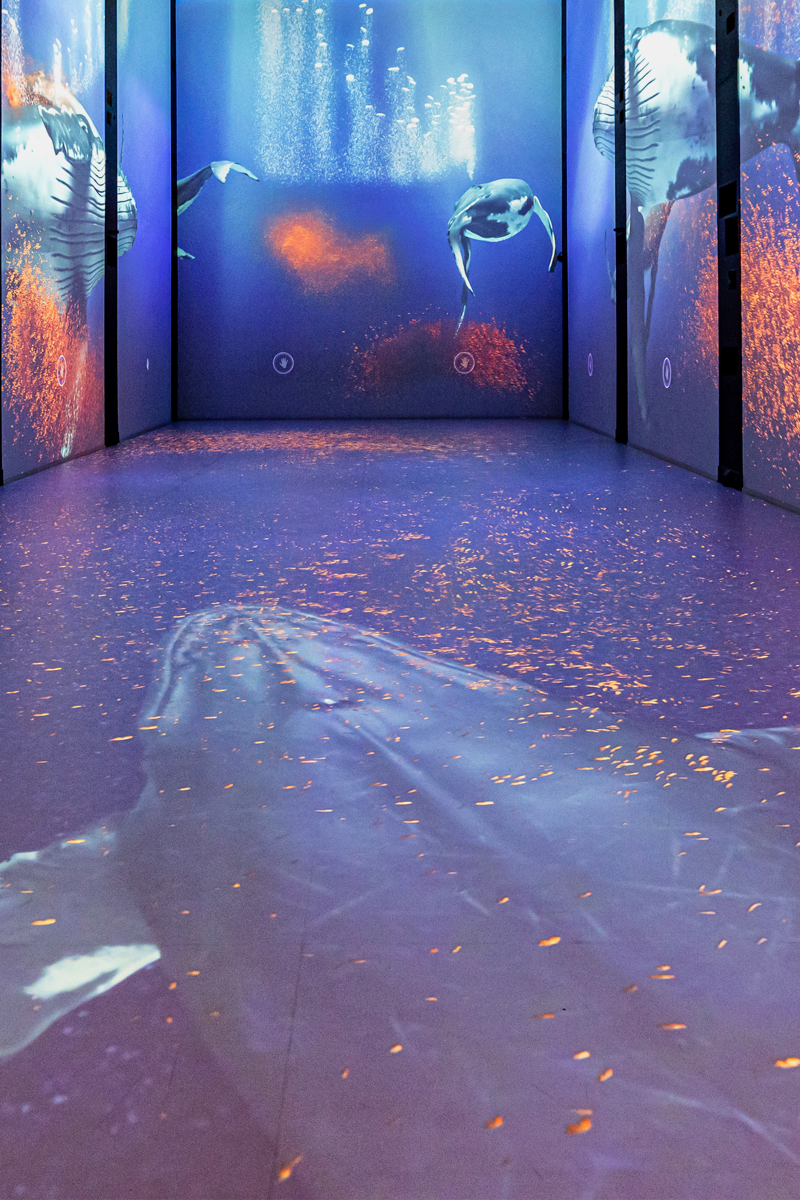
- SPACE N°4
Immersive travel from the North Pole to the South Pole
Attention: The IMMERSION room will close on November 4, 2024. The other areas of the Polar Mission exhibition will remain accessible until January 5, 2025.
In the “IMMERSION” room, the wild and grandiose beauty of these icy lands comes to life in a never-before-seen immersive and interactive device.
With 650 m2 of projection surface, you’re transported to the heart of polar landscapes to experience 6 iconic scenes. First to the North Pole in the company of a bear and her cubs, or under the ice floe to snorkel alongside seals, whales and narwhals who may well respond to your solicitations. Then off to the South Pole to watch the whales, ready to gobble up hundreds of kilos of krill before fleeing beneath your feet. And let’s not forget the elephant seals lounging on the coast, keeping an eye on orcas ready to emerge from the water; emperor penguins huddled together to fight the blizzard and protect their young.
An enchantment that ends with the incredible spectacle of the polar auroras. A voiceover in each image reminds us of the fragility of this ecosystem and the threats to these species. Like the difficulty bears have in finding food as the sea ice melts.
- SPACE N°5
Understanding the challenges of polar scientific research
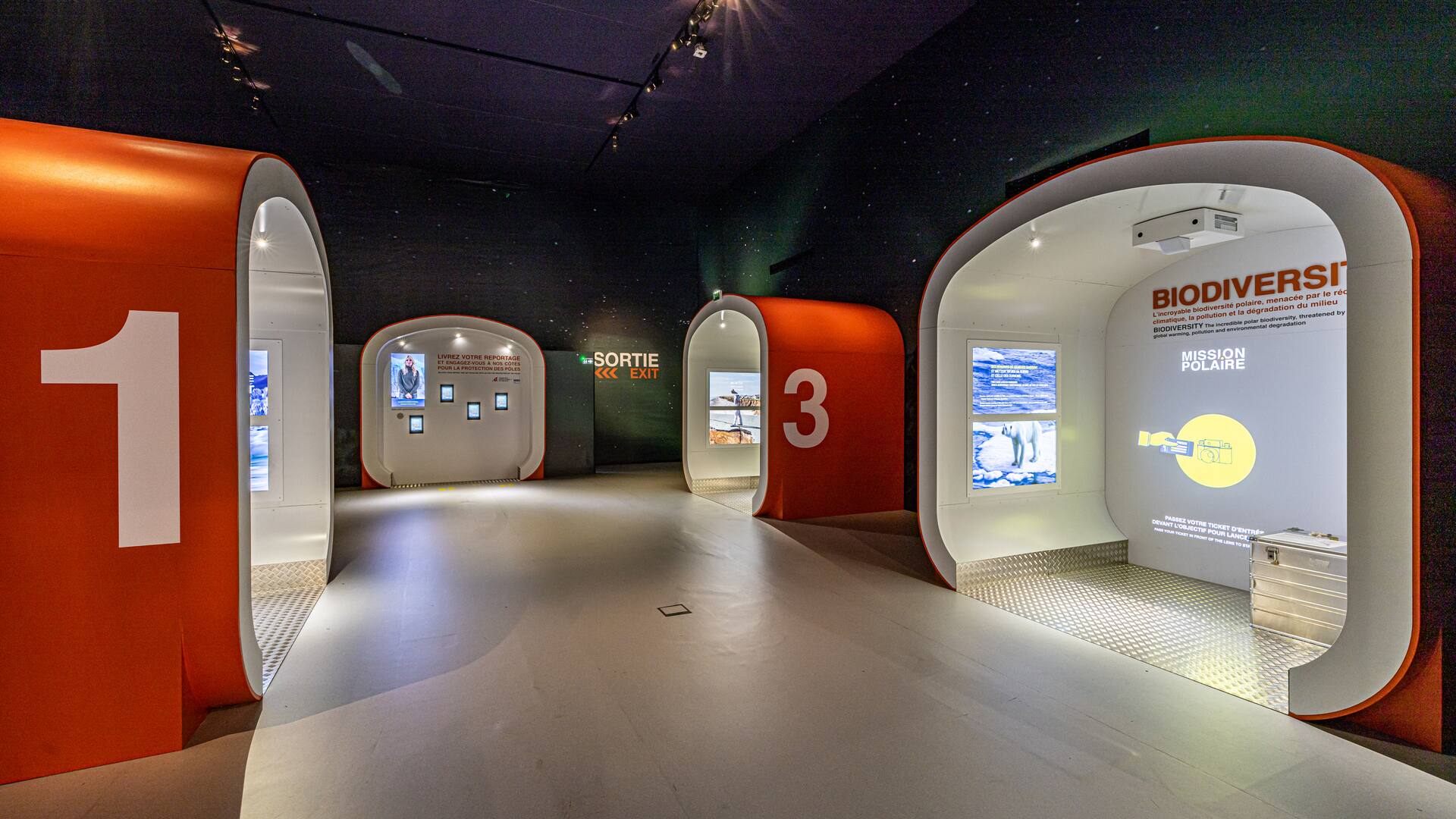
What would knowledge of the poles be if science hadn’t been involved for many years?
Meet our “scientist” who’s waiting for you to ask her about the impacts and upheavals taking place at the poles. A few key facts and figures to help you understand the phenomena affecting the Arctic and Antarctic, and the impact of these changes on a global scale and on our daily lives. The first module presents current knowledge of the climate and the consequences of global warming: melting ice, rising sea levels…
With very concrete explanations, discover the issues surrounding the Thwaites Glacier in Antarctica. This monster, 600 km long, 120 km wide and around 3 km high, is cracking and could break loose. Its melting into the ocean alone could represent a rise of some 60 cm in sea level.
A second module focuses more specifically on the impact of global warming on biodiversity: how global warming affects species such as emperor penguins, narwhals, polar bears, krill…
Finally, the last module recalls what we know about the consequences for mankind: from the displacement of populations due to rising sea levels to the melting of permafrost, which brings with it the threat of the resurgence of extremely dangerous viruses and bacteria such as anthrax. Three modules with a single vocation: understanding for better anticipation.







